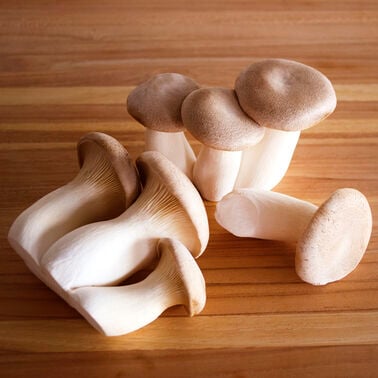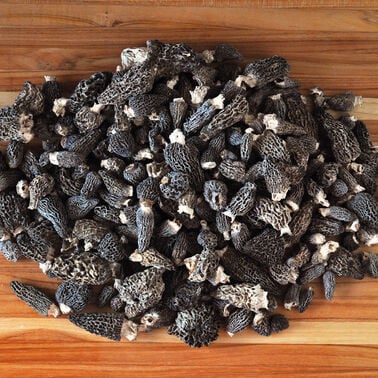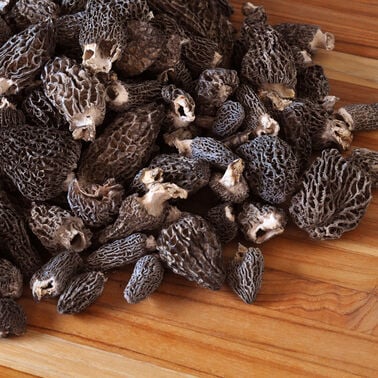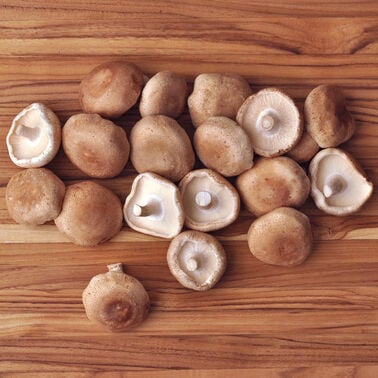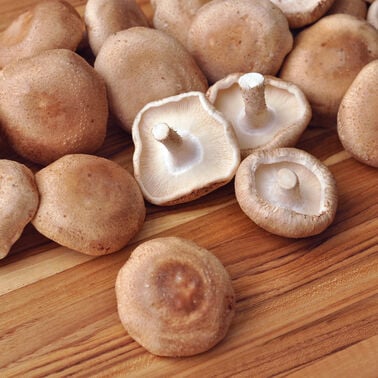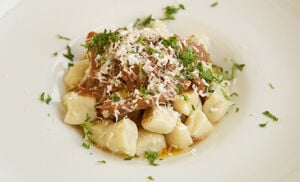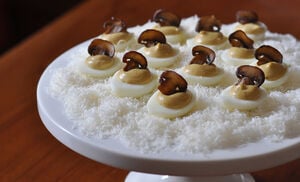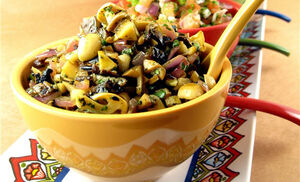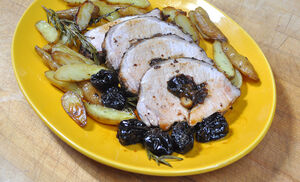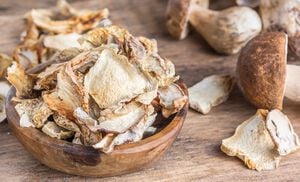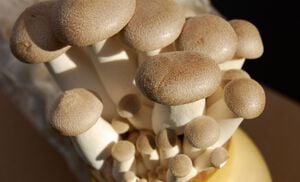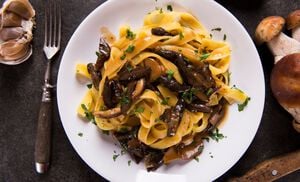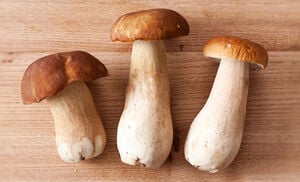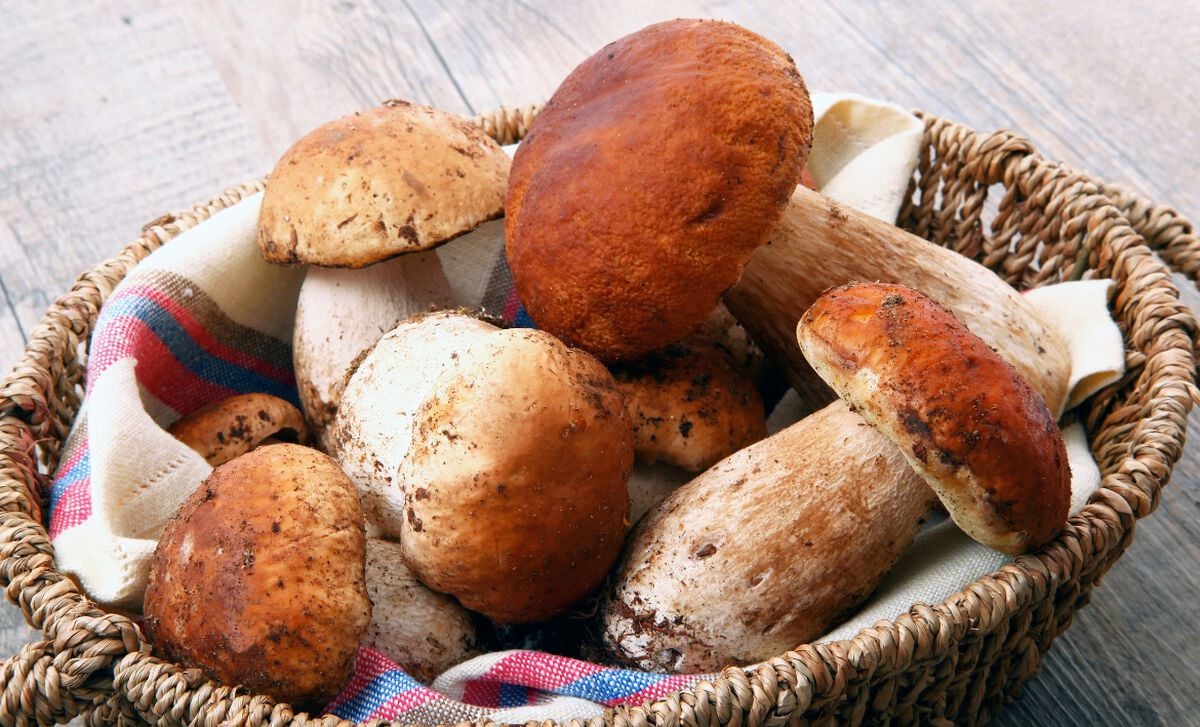
Known, and loved, in Italy as porcini (meaning piglet), this mushroom is also called cèpe in French, from the Gascon word cep, meaning trunk, referring to its fat stem. Sometimes the porcini is called the king of mushrooms.
Porcini are always gathered in the wild and not cultivated, because the complex and symbiotic relationship between the mushroom and the tree roots is hard to reproduce. All varieties of porcini are characterized by thick stems and round, fat caps when young. As the mushroom grows the cap flattens and opens up a bit. So a fat young porcini mushroom will look entirely different than the older version. Stems are pale and caps can range from light tan to deep burgundy-brown. Porcini can grow as large as a foot across but are often picked when much smaller. The porcini differs from other mushrooms in that it has a spore sponge, not gills underneath the cap. As the mushroom ages this pale spore sponge will darken and turn green. This is something to look for when buying fresh porcini, and is an indication that the mushroom is past its prime. There are lots of look-a-like boletes that get passed off as porcini, but aficionados know that nothing can come close the king of mushrooms.
Cleaning Porcini Mushrooms
Use a minimum of water and try not to allow water to enter the spore sponge under the cap. Cut away any dark spots or green areas. Keep an eye out for worms, who also find porcini tasty. If there is lots of dirt on the porcini, toss it gently in a colander, or gently wipe with a damp paper towel.
Cooking Porcini Mushrooms
The versatile porcini has been used in traditional cooking from Scandinavia to Southern Europe, and the mushroom is a favorite in Gascony, France, cooked in duck fat, of course. And Italians have made an art of cooking with porcini, both dried and fresh. The cap and stem of this mushroom are equally tasty, but the texture of the stem is slightly tougher than the cap. The porcini mushroom is meaty and the taste is intense: rich and woodsy with subtle nutty undertones. These mushrooms are delicate in flavor but vigorous enough in body to be used in brown sauces and will stand up to strong flavors like grilled steak. Cook the stems slowly, in soups or braises, but sauté the caps in duck fat or butter. Porcini are a wonderful partner to pasta, risotto, and gravies.
Preserving Porcini Mushrooms
If you are lucky enough to possess fresh porcini, eat as many as you can in that state. However, this sturdy mushroom dries well. More often available frozen or dried, the flavor and texture of this hardy mushroom can withstand either process. Dried mushrooms can be reconstituted with hot water in a short time, and the porcini-infused water can also be used in a sauce, soup, or pasta dish. You may find porcini powder available year-round, which acts as magical dust in dry rubs, stews, stuffing, and especially in sauces. It is like a secret weapon in the kitchen, bringing great depth of flavor to any dish to which it is added.
